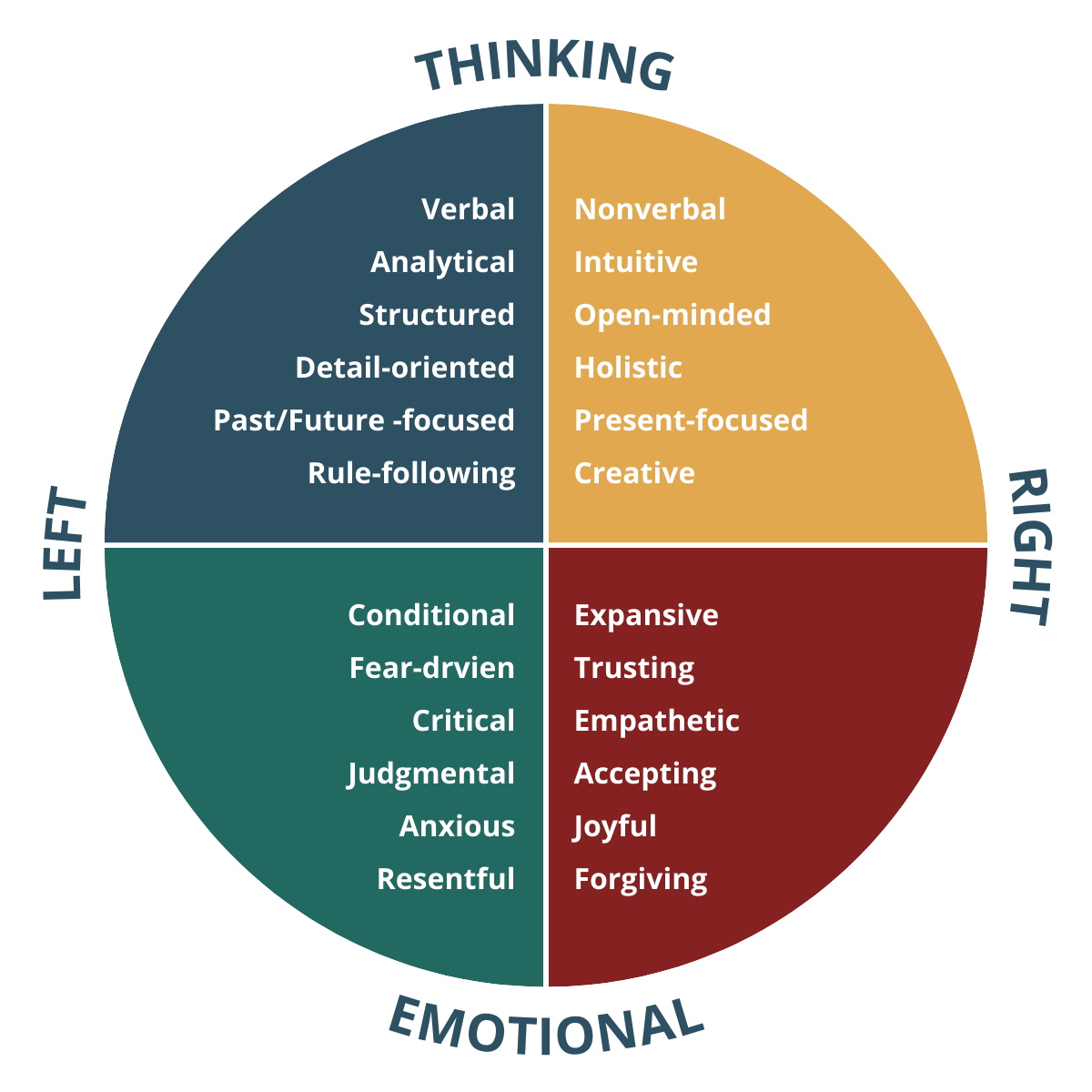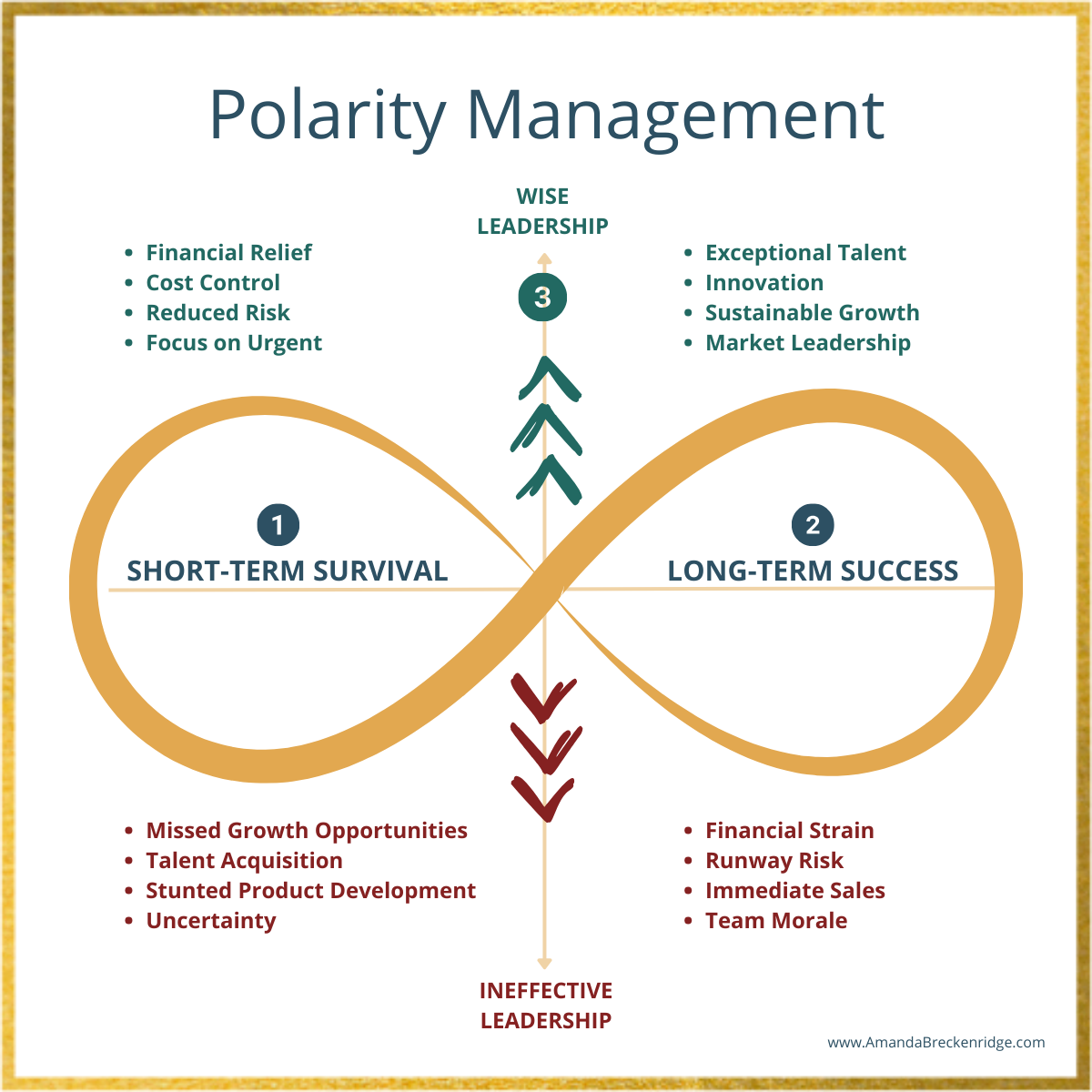Integrate to Innovate
Why black-and-white thinking is detrimental to your business and how to integrate opposites instead
Deciding what to do and how to show up in the world can sometimes feel like this or that, with choices appearing to be in opposition. This is especially acute in the world of startups where high-stakes decision-making is ever-present.
Allow me to offer a different perspective. “Integrating Opposites” is about understanding how detrimental black-and-white thinking can be to your business and how the most powerful solutions often emerge from the harmonious integration of seemingly conflicting ideas, both in business and in our personal lives. You can’t afford to ignore this.
Recognize the Tug of Opposites
It’s essential to recognize how our brains tend to categorize choices or ways of being as either/or. Here are three questions to help you reflect on this:
Are you often confronted with choices that feel like an “either/or” ultimatum? Binary thinking tends to elicit feelings of frustration, doubt, and a sense of being trapped.
When you encounter seemingly opposing choices, do you find yourself automatically leaning toward one and dismissing the other? This inclination carries a steep cost. It can lead to missed opportunities and blind spots that threaten the success and longevity of your business.
Can you recall a situation where you believed you had to choose between two options, even though both had merits? Or maybe you’re currently facing such a dilemma? Hold onto this example as we’ll use it below.
Use Neuroscience to Your Advantage
I’d like to introduce you to Dr. Jill Bolte Taylor, a Harvard-trained and published neuroscientist. Dr. Taylor’s research and first-hand experience provides invaluable insights into the brain’s structure and its profound impact on our decision-making processes.
Her theory suggests that we have four distinctive groups of cells, divided between our two brain hemispheres, that generate four consistent and predictable ways of thinking and being.
Here’s a quick overview:
Left-Brain Thinking: Verbal, analytical, structured, detail-oriented, past/future-focused and rule-following.
Left-Brain Emotional: Conditional, fear-driven, critical, judgmental, anxious, and resentful.
Right-Brain Emotional: Expansive, trusting, empathetic, accepting, joyful, and forgiving.
Right-Brain Thinking: Nonverbal, intuitive, open-minded, holistic, present-focused, and creative.
The brain's natural organization, with its distinct left and right hemispheres, can contribute to the inclination to categorize choices, decisions, or ideas as either one thing or its opposite, without considering nuanced or middle-ground options.
If you had to guess, which mode would you say you spend most of your time in?
It's common to feel the pull of the left hemisphere, especially when faced with complex decisions that require breaking them down into manageable parts. This inclination can lead to clear-cut, black-and-white distinctions. However, the key lies in recognizing this natural tendency, appreciating the interplay between all four modes, and harnessing their collective power.
By integrating the strengths of each quadrant, we gain a comprehensive toolkit for decision-making. It's a journey of transcending binary thinking, embracing the nuances, and crafting innovative solutions that drive your startup toward success.
Do You Ever Choose Between Short-Term Survival or Long-Term Success?
I want to share a real-life scenario that perhaps you can relate to. One of my clients, we’ll call her Sarah, was in an exhaustive search to fill a Head of Engineering position. She finally found the perfect candidate that possessed the skills and expertise to propel the company to new heights. However, there was another pressing issue: the startup’s financial runway was running out faster than expected.
The Dilemma:
Naturally, the initial question was, should she hire this exceptional talent, knowing that it would come at a high short-term cost, or should she prioritize short-term survival by conserving funds? At first glance, the decision appeared to be an “either/or” situation. Hiring the new head of engineering would undoubtedly shift the company’s direction in the long-term, but it came with a substantial financial burden in the short term. The funds were dwindling, and the pressure was mounting to make immediate sales and accelerate product development.
Unhooking from Binary Thinking:
I worked with Sarah to recognize the need to transcend the “either/or” thinking. Staying in that mode put her at risk of missing opportunities and a potential standstill for the company. Recognizing this, we decided to explore alternative options, opening up to the idea that there might be a “third way” that harmonized short-term survival and long-term success.
The Third Option:
After careful consideration and exploration of various scenarios, Sarah chose a third option that demonstrated her commitment to both immediate survival and future growth. She structured the role of the Head of Engineering as a “player-coach.” In this capacity, the new hire would not only lead the engineering team but also actively contribute by writing code—a dual role as a manager and an individual contributor.
This innovative approach allowed Sarah to justify the cost of the new hire by immediately boosting the product development process. It also provided the Head of Engineering with a clear path to transition out of the player-coach role once specific milestones were achieved.
Additionally, Sarah engaged in open communication with the candidate about the financial challenges the startup was facing. They agreed on a compensation package that included higher equity and lower cash compensation, aligning the candidate’s success with the company’s long-term growth.
Your Challenge
Using the graphic above as a guide, work through the situation you brought to mind during your reflection. Rather than fixating on the two sides, explore how you could unite both elements to unveil your distinctive third option.
Want to Learn More?
Delve into the fascinating insights about the human brain and decision-making with Dr. Jill Bolte Taylor's TED talk.
She provides a unique perspective on how our brain's structure influences our choices and offers valuable takeaways for how to show up. I highly recommend this enlightening talk.
Also, so many startups are facing uncertainty—dwindling runways, team stagnation, and elusive funding. In this LinkedIn article, I take the constellation of questions that so many clients are having right now and turn them into actionable steps to help you evaluate your company’s reality for informed decision-making, clearly define and act upon critical milestones, and lead with unwavering integrity and authenticity. If this speaks to you, give it a read.
Integrate to Innovate
The power of integrating opposites lies in your hands. As startup leaders, this concept can be a game-changer in your decision-making process. By harmonizing conflicting ideas, you not only find innovative solutions but also create a culture of adaptability and creativity within your organization.
I encourage you to apply this concept to the decisions you make in business and how you choose to show up in the world. Leave a comment to let me know what’s working and what’s not.
Sometimes the most profound insights emerge when we bridge opposing forces.
Until next time,
Amanda





